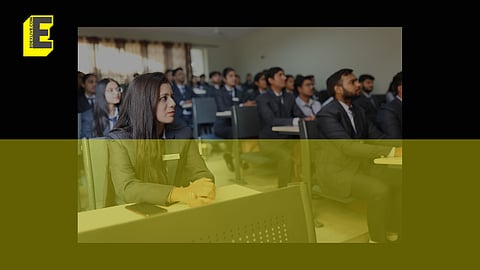

CAT is often viewed as a gateway to India’s top management institutes, such as the Indian Institutes of Management (IIMs). Over time, it has earned a reputation as an “engineer’s exam,” largely because many IIM classrooms are filled with students from engineering backgrounds.
This perception has discouraged many non-engineering aspirants, making them question their chances; however, the truth is that CAT doesn’t favour any one background or students from a particular stream.
It’s time to break the myth and understand what the CAT is really about.
Understanding what CAT really tests
The Common Admission Test (CAT) is designed to assess graduates from all academic streams — arts, commerce, science, and more. It evaluates a candidate's aptitude for management education through a range of skills such as quantitative ability, verbal reasoning, and logical thinking.
While a significant number of candidates happen to be engineering graduates, this is not because the exam is tailored for them. Engineers often pursue management as a natural extension of their career goals, and are usually more exposed to quantitative and analytical problem-solving during their studies, which aligns with some sections of the CAT. However, this does not mean others are at a disadvantage.
CAT is an aptitude test, not a test of academic background. Its three core sections, namely:
- Verbal Ability & Reading Comprehension (VARC)
- Data Interpretation & Logical Reasoning (DILR)
- Quantitative Aptitude (QA)
They are skill-centric. Many students from commerce and humanities perform exceptionally well in the VARC section, where comprehension, language proficiency, and critical thinking matter more than any technical training.
Even the quantitative section does not require engineering-level mathematics. It focuses on clarity of concepts, speed, and logical problem-solving, all of which can be developed through regular practice, regardless of one's academic stream.
Several successful managers and business leaders have come from non-engineering backgrounds. Their achievements often stem from their ability to think critically, adapt to complex situations, and bring diverse perspectives to problem-solving. These are qualities shaped not just by education, but by experience, curiosity, and a willingness to learn — qualities that CAT, and management itself, ultimately rewards.
The diversity shift in B-Schools
Over the past decade, top management institutes, especially the IIMs, have started placing greater importance on academic and professional diversity. To encourage more non-engineering applicants, several IIMs now include diversity points in their shortlisting criteria.
It’s a clear sign that great managers aren’t limited to just science or tech backgrounds.
What happens after the CAT has also evolved significantly. Written Ability Tests (WAT), Group Discussions (GD), and Personal Interviews (PI) now focus more on communication, general awareness, clarity of thought, and lived experiences.
In many of these areas, candidates from non-engineering backgrounds often bring new ideas and fresh ways of thinking.
The bottom line
CAT is not just for engineers. It is a competitive exam meant for anyone who wants to study management. The idea that it favours only technical students is simply not true. With the right preparation, steady effort, and self-belief, students from any background can clear the exam and get into the top business schools in India.
If you are not an engineer and are preparing for the CAT, do not let the myths hold you back. Keep working hard and stay focused. Your unique background and perspective matter. With commitment and confidence, you can break barriers, challenge stereotypes, and bring fresh thinking to the world of management.
Gautam Puri is the Vice Chairman & MD, Career Launcher. Views expressed by the author are their own.
